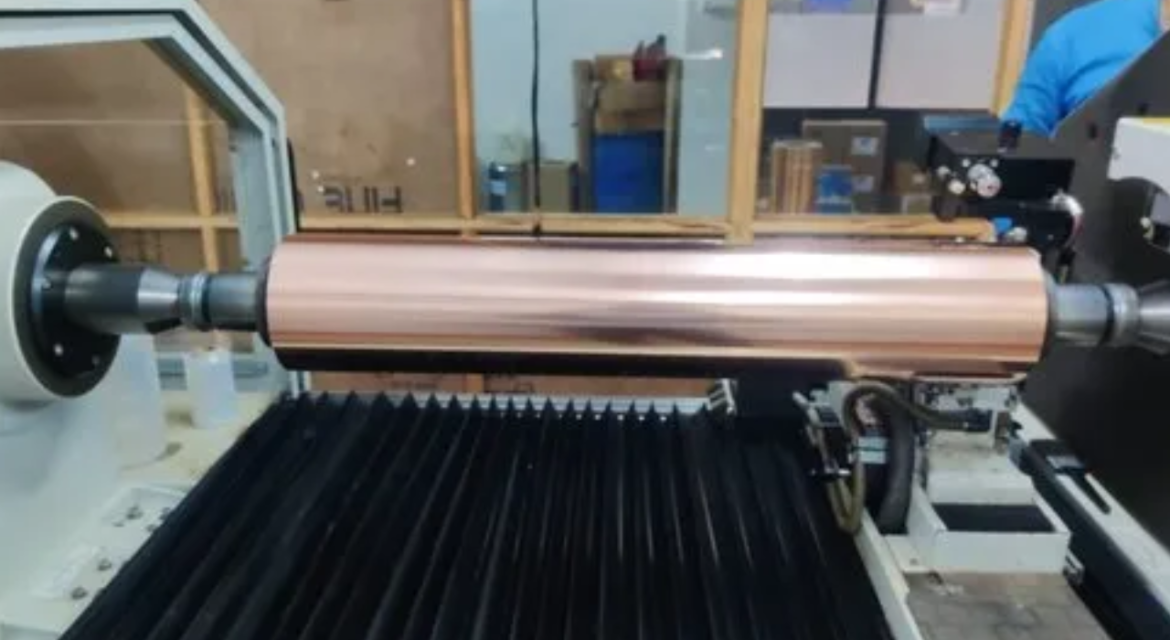Cylinder engraving is a specialized art and industrial procedure that plays an important role throughout numerous sectors, blending craftsmanship with technological precision. This approach involves the meticulous incision of designs onto cylindrical surfaces, starting from metals and plastics to glass and ceramics. Its applications are various and essential, encompassing industries such as printing, manufacturing, ornamental arts, and business marking.
In the printing enterprise, cylinder engraving enables the production of awesome prints in strategies like flexography and gravure, where engraved cylinders switch ink onto substrates with precision and consistency. Moreover, in production and engineering, engraved cylinders are indispensable for growing molds, embossing patterns, and marking products with serial numbers or branding. In commercial applications, cylinder engraving holds importance in the realm of ornamental arts, enhancing products with customized designs and intricate patterns.
Advancements in technology, which include CNC machining and laser engraving, have similarly delicate artwork, keeping in mind complicated detailing and efficient production at scale. Overall, cylinder engraving stands as a testament to technological innovation, driving aesthetic enhancement and business functionality across diverse fields.
Can Cylinder Engraving Be Automated?
Cylinder engraving can be automated with the use of advanced equipment and laptop-managed structures. Automated engraving systems utilize precise CAD/CAM designs to etch styles or textures onto cylindrical surfaces with excessive accuracy and efficiency. This automation reduces human errors, increases production speeds, and ensures constant high quality, making it suitable for excessive-volume production and printing applications.
Techniques Used For Cylinder Engraving
Engraving on cylinders is a meticulous art that mixes conventional craftsmanship with current techniques. It entails the careful incision of designs onto cylindrical surfaces, often for applications in printing, industrial marking, or decorative arts. This article explores numerous strategies used in cylinder engraving.
Traditional Hand Engraving
Historically, cylinder engraving has predominantly been done by hand with the use of specialized equipment, which includes gravers and burins. This technique requires relatively professional artisans who meticulously carve designs without delay onto metal, timber, or other materials. Hand engraving permits difficult detailing and customization, making it perfect for inventive and bespoke applications. However, its miles of hard work are expensive and time-consuming, limiting its practicality for mass manufacturing.
Mechanical Engraving
Mechanical engraving has revolutionized cylinder engraving by introducing automatic precision and performance. This method makes use of CNC machines prepared with rotating reducing equipment to engrave designs onto cylinders. The technique starts with changing digital designs into gadget-readable codecs, which manualize the CNC system to execute particular cuts consistent with the required sample. Mechanical engraving is extensively used in industries requiring high-quantity manufacturing of engraved cylinders, such as printing presses, embossing rollers, and commercial marking structures.
Laser Engraving
Laser technology has also made advancements in cylinder engraving, imparting remarkable precision and versatility. Laser engraving utilizes targeted laser beams to etch designs onto cylinder surfaces with brilliant accuracy. This non-contact method is especially high-quality for sensitive substances and difficult patterns. Laser engraving structures can also manage an extensive range of substances, which includes metals, plastics, glass, and ceramics, expanding the utility possibilities beyond conventional substrates.
Electrochemical Etching
Electrochemical etching is every other technique used for cylinder engraving, especially for marking and identity purposes. It includes the use of an electrolyte solution and an electric current to selectively dissolve cloth from the cylinder’s floor, developing engraved markings. This technique is regularly employed in industries requiring durable and corrosion-resistant markings, which include the aerospace and automotive sectors. Electrochemical etching offers particular manipulation over depth and first-class engraving, making it perfect for serial numbers, trademarks, and different permanent identifications.
Conclusion
Cylinder engraving techniques have drastically evolved from traditional hand strategies to state-of-the-art automated approaches driven via CNC machines and lasers. Every approach gives specific benefits in terms of precision, performance, and suitability for specific materials and applications. As generation continues to boost, cylinder engraving remains a critical issue for industries. Knowledge of those strategies provides insights into the craftsmanship and innovation driving this specialized field ahead.
